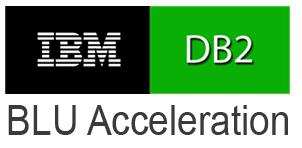IBM Db2 with BLU Acceleration
More data. Less waiting.

When it’s time to upgrade your database structure, you need it done fast, and done right. With XTIVIA as your implementation partner, an IBM Db2 BLU Acceleration will elevate your database architecture to a new level.
What is IBM Db2 BLU Acceleration?
BLU acceleration is an array of technologies from IBM that’s designed to bring existing architectures more speed, efficiency, and adaptability to modern technology conditions. XTIVIA’s BLU implementation consists of seven big ideas:
- Actionable compression – approximate Huffman encoding, and decompression is not needed for some comparisons
- SIMD (Single Instruction, Multiple Data) exploitation of CPU
- Core-friendly parallelism – using the CPU cache if memory is too slow
- Columnar data store – Tables organized by column instead of by row
- Scan friendly memory caching – Not all data has to be in-memory
- Data skipping – Synopsis tables allow large chunks of data to be skipped
- Cross-platform — Since Db2 BLU acceleration is an integrated part of Db2 for Linux, UNIX, or Windows, and is available on Db2 for Linux, UNIX, or Windows on Db2 version 10.5.
Things to Consider When Implementing BLU Acceleration
- Db2 BLU acceleration is most appropriate for analytics workloads consisting of non-selective data access. The best performance is achieved for queries that access more than approximately 5% of the data, and that perform extensive scanning, grouping, and aggregation.
- Both column-organized and row-organized tables can be mixed in the same database, but doing so requires very careful memory configuration. XTIVIA can help you identify which organization is appropriate for which tables and configure your environment for success for a mixed workload.
- There are restrictions on what is supported for column-organized tables, including restrictions on identity columns and foreign keys. XTIVIA can help you identify and work with these restrictions.
- The only indexes allowed on column-organized tables are those support unique constraints.
- Good compression is critical for performance in BLU databases. Let XTIVIA help you analyze the compression you are getting and see what steps can be taken to improve compression ratios.
- Only certain editions of Db2 include BLU acceleration. Let XTIVIA help you find the most cost-effective edition that will meet your needs.
Review your IBM Db2 database performance.
Let’s discuss how we can implement Db2 BLU acceleration in your Linux, UNIX, or Windows environment.
XTIVIA’s Implementation
- Determine if your workload is a good candidate for using BLU Acceleration
- Size an environment with enough resources to support BLU Acceleration
- Discus supported and recommended hardware
- Convert existing tables or load data into tables that meet BLU requirements
- Modify your data loading procedures for the best possible performance
- Tune an existing BLU environment to work past bottlenecks and memory errors
- Tune concurrency to match your workloads and hardware
- Do a POC(Proof Of Concept) for BLU acceleration and compare performance before making the move
- Implement HADR for a BLU database
There are many ins and outs to actually implementing BLU acceleration. It is a paradigm shift in some ways for the DBA. There are different metrics to pay attention to, different best practices for loading data, and different hurdles along the way. Whether you’re converting an existing database or implementing BLU in a new database, engage us to help.


